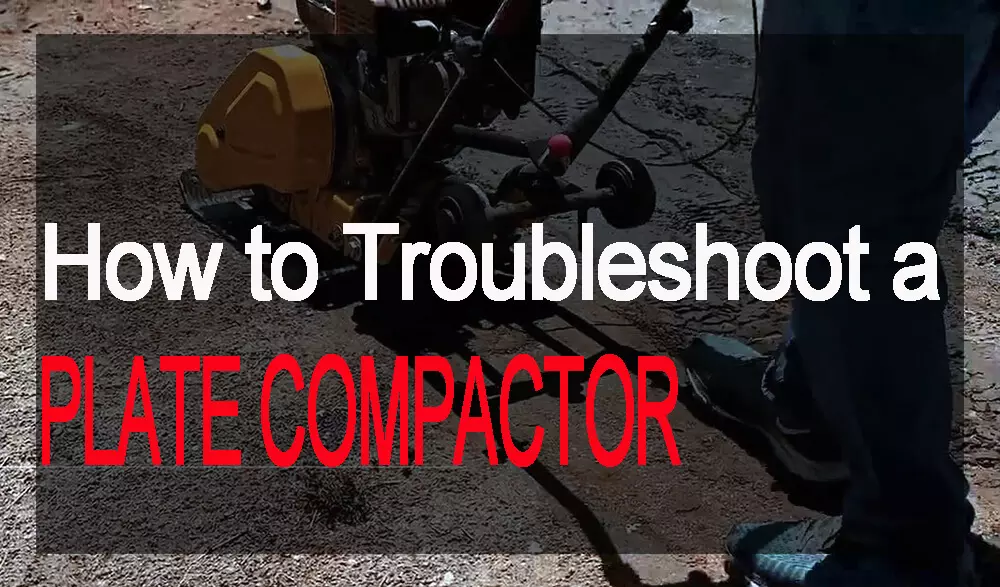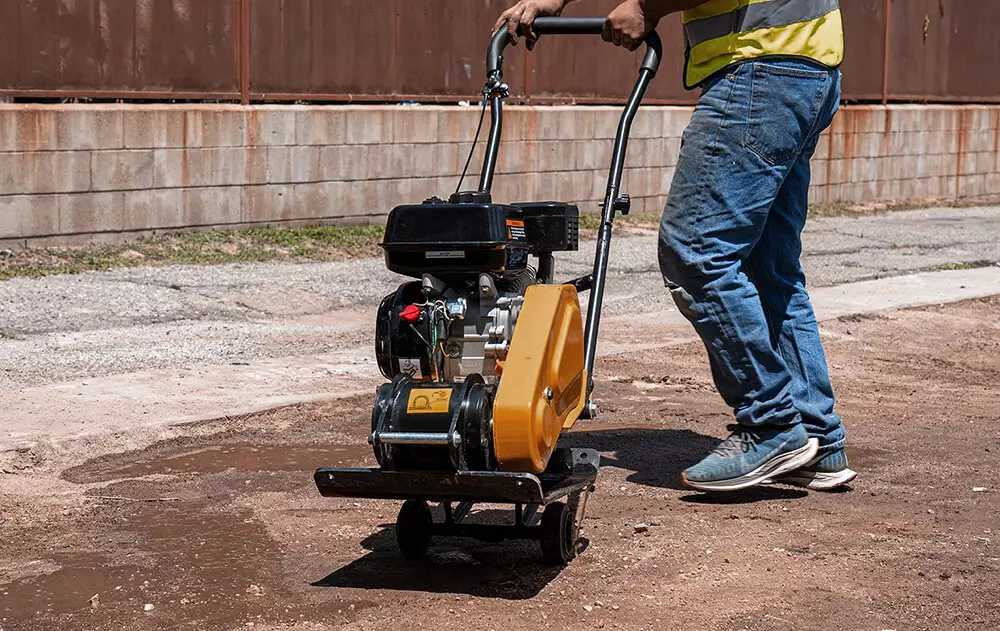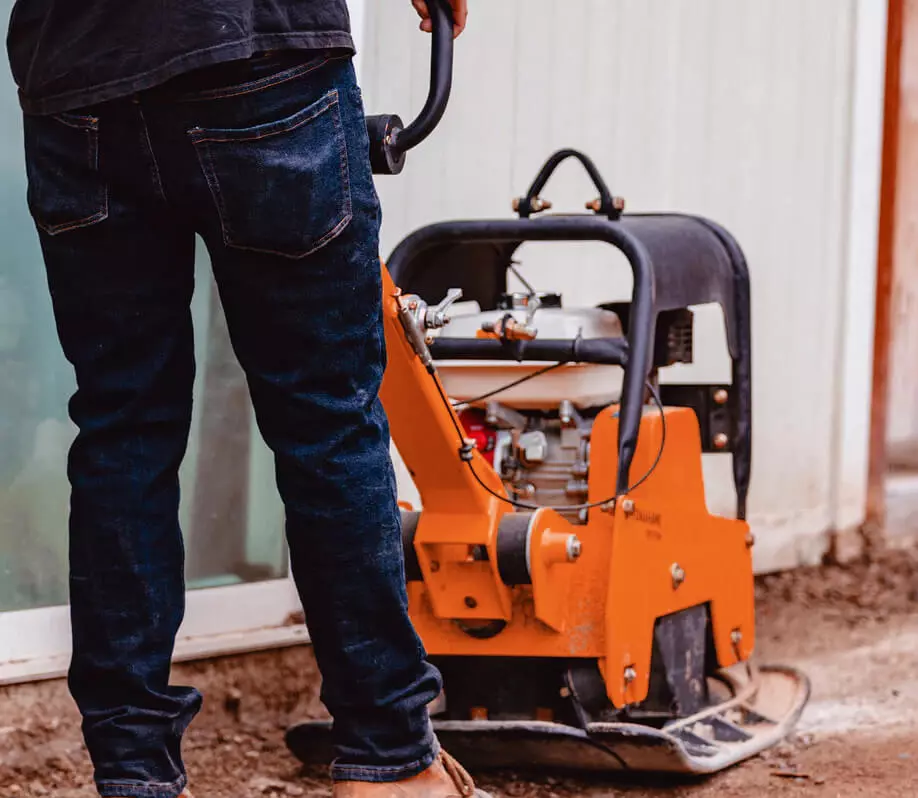04Feb 2024
table of contents

As one of the most important pieces of equipment in the construction industry, plate compactors play a key role in achieving a solid, level foundation, which is vital to any construction project. Thanks to its vibration capabilities, this powerful tool can compactly reshape, level and reinforce soil surfaces to support roads, buildings and other structures.
However, even most reliable vibrating plate compactors can experience troubleshootings that cause downtime and impact overall job site productivity: compactor engine will not start or continue to run, engine running but no vibration, engine lacks power, plate compactor is difficult to control or compacts unevenly, poor performance, soil is difficult to compact, among others.
In this guide, we'll take a closer look at these glitches, shed light on possible causes, and provide detailed instructions on how to fix them. Our goal is to help you solve these common plate compactor problems. Be better prepared to keep your plate compactor running smoothly and your job site efficient. Keep reading to improve your troubleshooting skills.
At its core, plate compactor machine operates on the principle of vibratory forces. An internal combustion engine powers the device and activates eccentric weights located in compartments beneath the steel plates. As this weight rotates, it creates a powerful force that is transferred to the board, creating controlled forward motion and intense vertical compaction. This compaction removes air from the soil and increases its density and stability—key prerequisites for construction.
However, like any machinery, plate compactors require regular troubleshooting to operate properly. Not only does this ensure optimal performance on site, it also helps flag any anomalies early, preventing potential downtime.
Routine checks of plate compactor play a key role in preventive upkeep, can help you catch potential failures before before they develop into significant issues.
Check fuel, oil and hydraulic fluid levels: Assess the levels of fuel, oil, and hydraulic fluid routinely, maintaining them at advised levels. Operating the compactor when these levels are deficient could lead to engine overheating or harm to other parts.
Personal Inspection of Fastening Parts: Over time, vibration can cause screws, bolts, and other fastening parts to loosen. Check and tighten these parts regularly as needed to enhance machine stability and performance.
Clean the fuel tank: In order to avoid impurities in the fuel system, need to regularly clean the fuel tank. This helps avoid engine problems caused by contaminated or old fuel.
Check the battery: For electric start models, check battery condition regularly, keep terminals clean and tight, and charge if necessary.
By performing these regular inspections, downtime can be significantly reduced and the reliability of your plate compactor greatly improved.

If you encounter issues with starting the engine or keeping it operational, ensure you adhere to the correct starting steps. Check to switch is in the right position. Subsequently, inspect oil, gas, and fuel valves to ensure they are open, and that there is an adequate supply of fuel and oil in the tank. Conducting cleaning or substituting these components might rectify the issue.
If the engine is running without the machine vibrating, the first step is to check the handlebars for any loose fixtures or bolts. The drive belt should also be inspected for any signs of damage or looseness. If there is still a lack of vibration, check the oil level in the excitation box; it may be too low. Filling the oil to a satisfactory level may solve the problem. Additionally, it is recommended to ensure that the eccentric weights are rotating correctly and to repair any abnormalities found.
If your engine seems to be running low on power, be sure to follow proper starting procedures and use the correct fuel and oil according to the manufacturer's instructions. A dirty carburetor or worn clutch and drive belt may be the cause of this problem. A thorough cleaning or replacement can restore your engine's power.
If the machine is difficult to control or compaction is uneven, it is recommended to adjust the throttle speed. The ground should be checked for irregularities. Additionally, evaluate rubber isolators and vibration mounts, as damaged or worn isolators or mounts can affect control and cause uneven compaction. Replacing or repairing these components may resolve the problem.
For generally poor plate compactor performance, check the throttle and adjust engine speed accordingly. Common causes of reduced engine performance may be a clogged air filter or problems with the fuel system. If necessary, clean or replace the air filter to improve performance.
If the soil is difficult to compact, consider moistening the soil slightly before compacting. This will add the necessary moisture to allow the soil to settle better. Testing the degree of soil compaction before and after each compaction process can also provide clearer troubleshooting guidance.
By following these troubleshooting steps, you can keep your plate compactor running smoothly. A thorough understanding of your machine and its operation goes a long way toward an efficient troubleshooting process. Stay proactive and you'll find that your equipment performs better, lasts longer, and makes a positive contribution to your project timeline.
Of course, in addition to mastering the troubleshooting steps of plate compactors, you also need to briefly understand some maintenance precautions:
Maintaining your plate compactor in optimal condition necessitates, special attention to three primary components: engine, drive belt, and spark plugs.
It's important to note that investing in a plate compactor powered by a reputable engine brand like Honda, famed for its durability, can prove to be beneficial in the long term. This choice can ensure minimal breakdowns and significantly prolong the life of the machinery.
In addition to selecting a quality engine, it's essential to fully comprehend manufacturer's warranty. Understanding specifics of what is covered and for what duration can save you a significant amount of money and time.

All in all, plate compactor troubleshooting can be a daunting task for many, but by mastering key troubleshooting and performing regular maintenance, you can ensure that every component is in good condition to keep your job site running smoothly.
However, for complex or ongoing problems, seeking professional help is critical to preventing further damage and ensuring safety.
If you're already considering upgrading or adding to your equipment arsenal, BISON offers reliable and rugged plate compactors designed for optimal performance in harsh conditions. Our dedicated team of experts are ready to help you with your plate compactor needs and provide purchasing advice, feel free to contact your BISON plate compactor supplier.
inquiry form here
BISON BLOG, All the latest news and views from Bison Machinery.